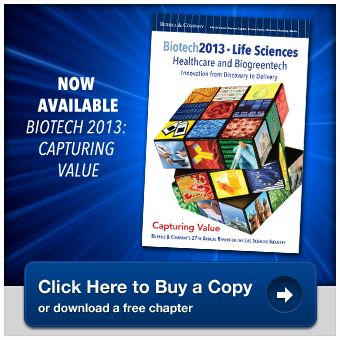“Early intensive guidance from senior FDA managers, a key element of the program, could help drugmakers learn, sooner rather than later, whether breakthrough-designated products will be successful, according to Christopher-Paul Milne of the FDA.”
Drugmakers are still learning how to succeed in a relatively new U.S. Food and Drug Administration program that benefits therapies offering substantial improvements over existing drugs serious conditions.
Just 30 percent of the first 113 applications for the U.S. Food and Drug Administration’s Breakthrough Therapy Designation were approved according to a new report from the Tufts Center for the Study of Drug Development at Tufts University.
Early intensive guidance from senior FDA managers, a key element of the program, could help drugmakers learn, sooner rather than later, whether breakthrough-designated products will be successful, according to Christopher-Paul Milne, the center's director of research.
“A key success factor for the program will be whether it serves the goal of helping drug sponsors and the FDA work together to cut development time, while encouraging the utilization of new development tools and methodologies, such as targeted diagnostics and adaptive clinical trial designs,” he says.
Congress created the breakthrough drugs program as part of its 2012 reauthorization of the Prescription Drug User Fee Act. A breakthrough designation expedites development and review of drugs intended to treat serious conditions in cases where preliminary clinical evidence based on a clinically significant endpoint suggests it might offer patients substantial improvement over available therapies.
Milne found that the majority of failed applications, 60 percent, came as a result of agency denials and applicants choosing to withdraw applications, according to Tufts, while the remaining 10 percent of applications were still pending at the time the study was conducted. The study was based on Tufts CSDD proprietary databases, FDA publications, ThomsonReuters’ Cortellis and professional literature.
The FDA denied drugmakers’ applications for the designation on the basis of both data deficiencies and failure to align with the programs goals. Reviewers sometimes found applicants’ data not sufficiently clinical or too preliminary; too focused on a subset of patients identified in post-hoc analyses of failed studies; or too reliant on “novel biomarkers or surrogate endpoints without sufficient supporting evidence,” according to the analysis, conducted by Milne and center research analyst Abigail Felix. In other cases the FDA found that applications failed to demonstrate sufficient improvement over existing therapies.
Drugmakers submitted 30 new applications for the breakthrough designation between January 1 and January 22, 2014, the most recent date for which data is available. So far, four applications have been granted and 11 have been denied. The rest are pending.
January 31, 2014
http://www.burrillreport.com/article-breakthrough_designation_proves_elusive.html





.gif)